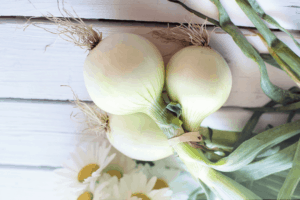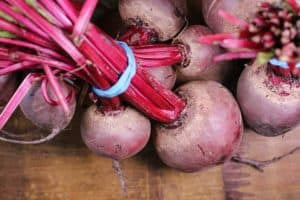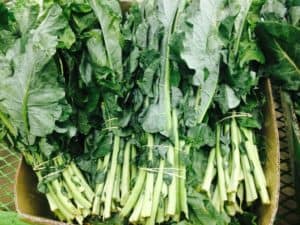Last Updated on May 9, 2021 by cmoarz
So it’s finally time, You’ve decided to start learning about grow bags! This is a fantastic day. Your world will never be the same again once you start using them, You know. First ill explain what a grow bag is, and than the kind of plants that can be grown in grow bags, lets get started!
A growing bag can be a fabric or plastic bag that can allow plants with shallow roots to grow. Growing bags are an ideal option for planting vegetables and flowers at balconies or small gardens.
The most exciting thing about growing bags is that they put out little waste and can be reused. Grow bag preparation depends on the type of plant you want to grow.
The bag has to be taken care of so that it can sustain the plant throughout the season. There is a difference between plastic pots and grow bags.
The key benefits that grow bags have over plastic pots include breathable fabrics that allow for temperature control, healthier roots and prevention of watering. Nothing feels special than eating fresh vegetables that you have grown yourself.
Try growing bags today, and you will be amazed by how much vegetables you can harvest from a small garden or balcony.
Here are a few of the plants you can grow in a growing bag.
Plants that can be Grown in Grow Bags
Potatoes
 Despite being favorite food for many people, potatoes are inexpensive and straightforward to grow. However, the problem with potato growing is that it requires a lot of space.
Despite being favorite food for many people, potatoes are inexpensive and straightforward to grow. However, the problem with potato growing is that it requires a lot of space.
Grow bags are a great way to grow potatoes because they provide a lot of space for potato roots to spread out. Grow bags are spacious enough to keep all the potato roots in one place.
Growing potatoes in a grow bag also allows you to control the area where your crops grow in. Potatoes can be grown in any grow bag, but there are specific bags that yield more produce and make the process simpler.
The best bags to grow potatoes are the ones that open on the side, allowing you to reach the potatoes when they’re ready for harvest.
The fact that potatoes grow underground makes them perfect for growing in containers and grow bags. Start with putting 12 to 18 inches of soil in the bottom of the bag, then add potato seeds and cover them with soil.
Sow potato seeds and cover them with more soil as the leaves start to poke through the soil. Allow your potatoes to grow freely once they reach the top of the bag. Your potatoes will be ready for harvest once leaves turn yellow. Simply open the flap on the grow bag’s side and harvest your potatoes.
Onions
 Like potatoes, onions grow underground and can do well in grow bags.
Like potatoes, onions grow underground and can do well in grow bags.
Simply sow the onion bulbs and cover it with enough soil, but let the top peek out.
Place the grow bag in a balcony or garden where it can get a minimum of 6 hours of sunlight daily.
Water the onions as needed and remember to weed out.
Harvest your onions when the top begins to fall and turn yellow. Check whether or not the bulbs are large enough to suit you before you harvest them.
Mushrooms
 One of the fun family projects is growing mushrooms in grow bags.
One of the fun family projects is growing mushrooms in grow bags.
Grow bags used for growing mushrooms come with an injector port that the farmer can use to add grains or any other nutrients needed for the growth of the fungi.
Mushroom grow bags are made of different materials that make mushrooms grow better than other vegetables.
However, mushrooms can be grown in any grow bag available on the market.
Tomatoes
 While tomatoes aren’t thought of as a perfect plant to grow in a grow bag, some tomato varieties tend to do quite well.
While tomatoes aren’t thought of as a perfect plant to grow in a grow bag, some tomato varieties tend to do quite well.
The best tomatoes to grow in a grow bag are the determinate variety.
A good example of determinate tomato to start with is Roma tomatoes.
Plant your tomatoes as would in a garden, but be sure to give it the support it needs. However, the size constraint of the grow bag can make it not suitable for use with a tomato cage.
Tomatoes can grow can also grow in hanging baskets and pots. The best varieties for grow bags are trailing and bush tomatoes.
The best time to grow tomatoes in grow bags is May after the danger of frost is over. You may still need to cover your tomatoes with a fleece during cold spells. Feed your tomatoes with high-potash fertilizer and water them evenly so that fruits don’t split.
Peppers
 Though peppers don’t grow underground, they tend to grow well in grow bags.
Though peppers don’t grow underground, they tend to grow well in grow bags.
Plant starts or seeds as you would do in a garden, but make sure the grow bag is spacious enough to accommodate the pepper plant.
You might need to provide the pepper plant some support, especially when it becomes too large.
Radish
 Peppery and crispy radishes are a good crop for growing in grow bags. They are great in salads.
Peppery and crispy radishes are a good crop for growing in grow bags. They are great in salads.
Growing radishes in grow bags is trouble-free. Radishes are ready for harvest in as short duration as a month.
Just sow radish seeds at least an inch apart, and 1cm deep in a grow bag.
Radishes tend to do well between March and August. For high yields, ensure a continuous supply of nutrients and water. However, never let your radish mature until they become woody.
The best time to harvest them is after about a month.
Beetroots
 Beetroots tend to grow well in grow bags. Seeds should be sowed every couple of weeks to avoid a glut.
Beetroots tend to grow well in grow bags. Seeds should be sowed every couple of weeks to avoid a glut.
Speed up germination by sowing beetroot seeds in water for a day or few hours before sowing them.
Sow three beetroot seeds together about four inches apart from other grains and about an inch deep in the soil.
Remember to water them during dry spells. Your beetroots are ready for harvest once they are the size of a golf ball.
Chard
 It is stunning leafy veg that falls under the category of beetroot and spinach. Swiss chard is becoming popular in a plant in kitchens due to its attractive and colorful stems. Swiss chard is available in rainbow varieties.
It is stunning leafy veg that falls under the category of beetroot and spinach. Swiss chard is becoming popular in a plant in kitchens due to its attractive and colorful stems. Swiss chard is available in rainbow varieties.
Sow Swiss chard seeds about an inch deep in the soil. It might be necessary to thin out some seedlings for healthy growth.
Cut the outer leaves and harvest regularly to allow for regrowth.
Kitchen Herbs
 Herbs are the most straightforward edible crops to grow in a grow bag. Sage, chives, thyme, oregano, mint, parsley, and rosemary tend to do well outdoors, but coriander and basil and best suited to kitchen balconies.
Herbs are the most straightforward edible crops to grow in a grow bag. Sage, chives, thyme, oregano, mint, parsley, and rosemary tend to do well outdoors, but coriander and basil and best suited to kitchen balconies.
Plant herbs that you love cooking and keep at the back door or by the kitchen so that you can remember to cook with them.
Chilies
 Chili plants are great in adding flavor to a multitude of dishes. They grow best on the windowsill, in a greenhouse, or under glass, but they can survive outdoors in a sheltered grow bag.
Chili plants are great in adding flavor to a multitude of dishes. They grow best on the windowsill, in a greenhouse, or under glass, but they can survive outdoors in a sheltered grow bag.
Chili plants get spicier as conditions get warmer.
Sow chili seedlings indoors and transplant them into a grow bag around May when there is no frost.
Lettuce
 Lettuce can grow in tiny spaces, including a small grow bag. You can use several grow bags to make a vertical lettuce garden.
Lettuce can grow in tiny spaces, including a small grow bag. You can use several grow bags to make a vertical lettuce garden.
Sow one to two seeds at intervals in less than an inch deep in a grow bag so that they don’t mature together.
Lettuce is well best suited for rich soil that has moisture.
Water your lettuce every morning instead of the evening, and remember to cut the head once the firm heart forms.
Carrots
 Like onions and potatoes, carrots do well in deep soil. However, there are a short-rooted variety of carrots that grow well in grow bags.
Like onions and potatoes, carrots do well in deep soil. However, there are a short-rooted variety of carrots that grow well in grow bags.
Sow seedlings 2 to 3 cm apart and place the grow bag in a sunny spot. Carrots should be watered only during a dry spell. However, be careful not to crush or bruise the foliage because the odor can attract carrot fly and root-ruining pests.
Spinach
 Spinach is a fast-growing crop. It takes 4 to 5 days for spinach seedlings to germinate. Spinach grown in grows bags are ready to harvest 30 to 50 days. Spinach can, however, be cut and used before they mature.
Spinach is a fast-growing crop. It takes 4 to 5 days for spinach seedlings to germinate. Spinach grown in grows bags are ready to harvest 30 to 50 days. Spinach can, however, be cut and used before they mature.
Experts recommend the use of potting mix when growing spinach in grow bags.
Cucumber
 Cucumbers grown in grow bags can mature in 55 to 65 days. Cucumbers can be harvested once the seeds harden and or when they are still immature. Allowing cucumbers to overgrow suppresses flowering.
Cucumbers grown in grow bags can mature in 55 to 65 days. Cucumbers can be harvested once the seeds harden and or when they are still immature. Allowing cucumbers to overgrow suppresses flowering.
Kale
 Kale can grow anywhere, including in a grow bag. They can survive any weather conditions. You can plant kale in a grow bag with seedlings or seeds. Kales from seeds planted in a grow bag can mature in 55 to 60 days, whereas seedlings can mature in just 20 to 30 days.
Kale can grow anywhere, including in a grow bag. They can survive any weather conditions. You can plant kale in a grow bag with seedlings or seeds. Kales from seeds planted in a grow bag can mature in 55 to 60 days, whereas seedlings can mature in just 20 to 30 days.
Conclusion
People living in an urban environment where space is scarce often wonder how they can feed their families with fresh vegetables.
One of the solutions is growing vegetables in a grow bag. While grow bags may not be appropriate for growing any type of plant, these vegetables tend to do quite well in grow bags.
Grow bags made of breathable fabric can help with humidity and temperature control.
The fabric also absorbs excess moisture to prevent over-watering your plants. Grow bags are a great option for growing underground crops.
Now that you have some knowledge in plants that can be Grown in Grow Bags, get started, you’ll wonder why you waited so long.
What to do with your grow bag vegetables?
If you are looking for another hobby that will pair great with grow bag or container gardening, You should consider canning and dehydration. We have a ton of articles on the subject to get you started too!
Why does it pair so well? For one thing, it allows you to keep all your hard earned and freshly grown vegetables for years. You won’t have to get depressed when you see that the vegies you harvested last season have already spoiled anymore because it simply doesn’t need to be an issue. Canning is really easy and takes almost no set up aside from a few initial purchases ex: Jars, Pressure caner if your doing more acidic foods etc). It’s a lot of fun and everyone is going to love you for your gift of preserves you will be showering your friends and family in.
if you are interested, check some of our articles on the subject such as:
Storage shelves for canning jars
Benefits of canning and preserving food
Or maybe you would just like to stick to gardening for now? Check out our other articles here:
Question: How much to water plants in pots
Types of container for gardening (frugal container garden)
Question: What is container garden companion planting?
and always handy

